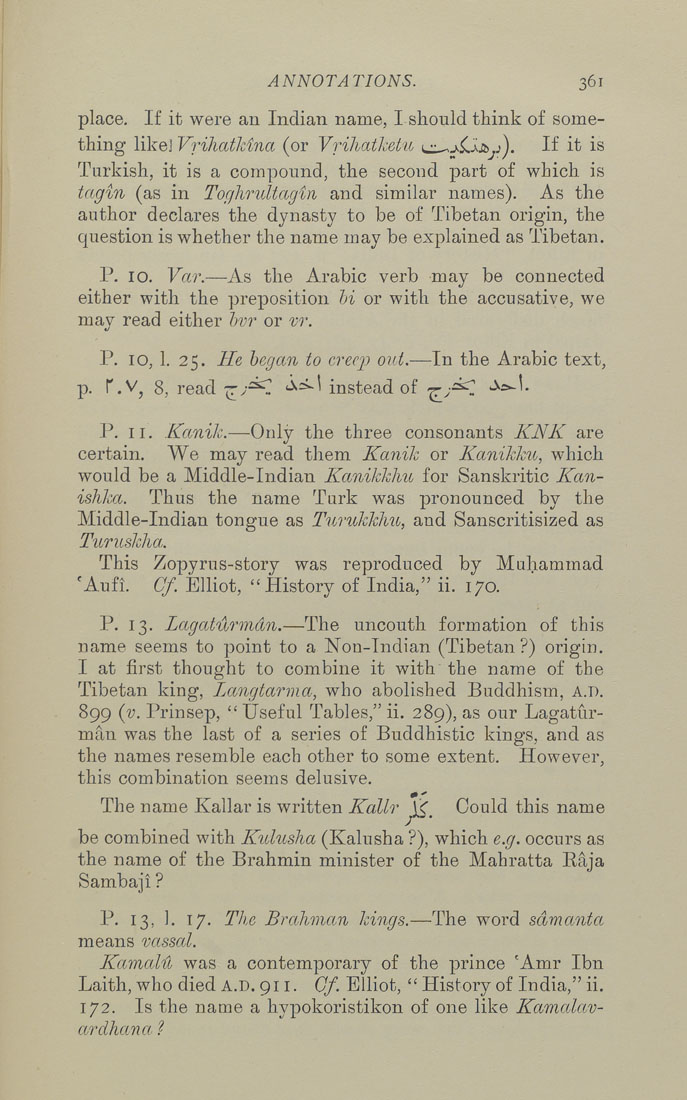ANNOTATIONS. 361
place. If it were an Indian name, I should think of some¬
thing like] Vrihatkinct (or Vrihatketu ij.:.^j.^ljb j). If it is
Turkish, it is a compound, the second part of which is
tetgin (as in Toghrultctgin and similar names). As the
author declares the dynasty to be of Tibetan origin, the
question is whether the name may be explained as Tibetan.
P. 10. Vctr.—As the Arabic verb may be connected
either with the preposition hi or with the accusative, we
may read either Iwr or vr.
P. 10, 1. 25. He begctn to creep ovi.—In the Arabic text,
p. r.V, 8, read -;^ ''^^^ instead of ^;^ '^^^•
P. II. Kctnik.—Only the three consonants KNK are
certain. We may read them Kanik or Kanikku, which
would be a Middle-Indian Kctnikkhit for Sanskritic Kan-
ishka. Thus the name Turk was pronounced by the
Middle-Indian tongue as Turukkhu, and Sanscritisized as
Titruskha.
This Zopyrus-story was reproduced by Muhammad
'Aufi. Gf Elliot, "History of India," ii. 170.
P. 13. Letgaturmdn.—The uncouth formation of this
name seems to point to a Non-Indian (Tibetan ?) origin.
I at first thought to combine it with the name of the
Tibetan king, Lctngtarma, who abolished Buddhism, A.D.
899 (v. Prinsep, " Useful Tables," ii. 289), as our Lagatur-
man was the last of a series of Buddhistic kings, and as
the names resemble each other to some extent. However,
this combination seems delusive.
The name Kallar is written Kallr K, Could this name
be combined with Kitlitsha (Kalusha ?), which e.g. occurs as
the name of the Brahmin minister of the Mahratta Raja
Sambaji ?
P. 13, ]. 17. The Brcthman kings.—The word sdmctnta
means vassal.
KctmctlH was a contemporary of the prince 'Amr Ibn
Laith, who died a.d. 911. Cf. Elliot, " History of India," ii.
172. Is the name a hypokoristikon of one like Kamctlctv-
ardhctnct ?
|








